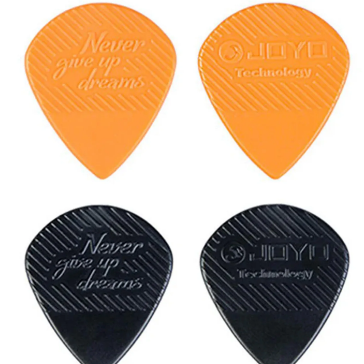Manaslu Books and Stationery , Bu. Na. Pa. - 10, Kapan, Bhandarigarment Chowk, Ktm
Products Details
- Home
- Products Details






Guitar Picks (Plectrums)
- SKU: 34412
- Availability: In stock
- Type: Art and craft
Guitar Picks (Plectrums)
✅ Characteristics of Guitar Picks:
Material:
Made from plastic (celluloid, nylon, Delrin), metal, wood, rubber, or even stone.
Each material affects tone and flexibility.
Shape:
Common shapes: standard teardrop, jazz picks (small and pointy), triangle, and thumb picks.
Shape affects grip and control.
Thickness (Gauge):
Thin (0.38–0.60 mm): Flexible, good for strumming.
Medium (0.60–0.80 mm): Balanced for strumming and picking.
Heavy (0.80–1.2+ mm): Rigid, good for precise lead playing.
Extra Heavy (1.5 mm+): For fast shredding or bass playing.
Size:
Smaller picks offer control; larger ones offer comfort for beginners.
Tip Type:
Rounded tips = softer sound
Pointy tips = sharper attack and better articulation
✨ Features of Guitar Picks:
Improved Precision and Speed:
Picks help in playing fast passages, especially for solos and lead guitar.
Consistent Tone:
Picks deliver a more consistent sound than fingers, especially in strumming.
Grip Surface:
Many picks have textured or raised grip surfaces to prevent slipping.
Durability:
Some materials last longer and resist wear from string contact.
Tone Variety:
Different picks create different tones — soft, warm, bright, or punchy — depending on material and shape.
🎵 Uses of Guitar Picks:
Strumming and Rhythm Playing:
Picks help in clean, even strumming for acoustic or electric rhythm parts.
Lead Playing and Solos:
Essential for fast alternate picking, sweep picking, and articulate solos.
Bass Playing (Optional):
Some bass players use thick picks for a punchy, aggressive tone.
Genre-Specific Techniques:
Rock/Metal: Heavier picks for precision and attack.
Jazz: Small, pointy picks for complex chord voicings and quick lines.
Pop/Folk: Medium or thin picks for smoother strumming.
Protecting Fingernails:
Picks are useful for players who don’t want to damage or grow their fingernails for fingerpicking.